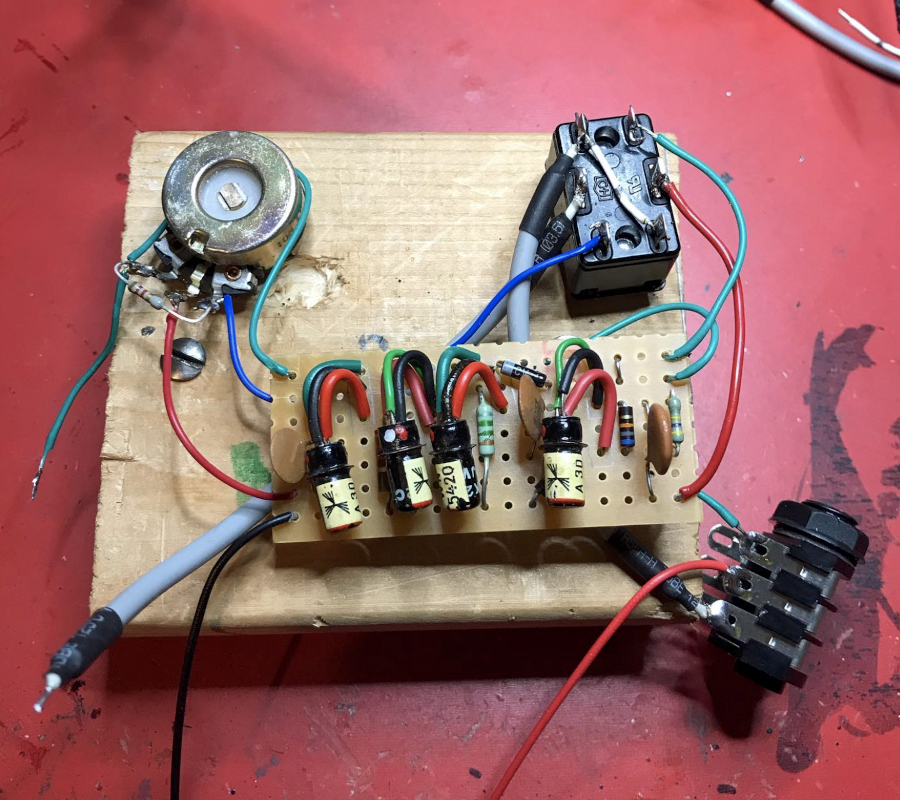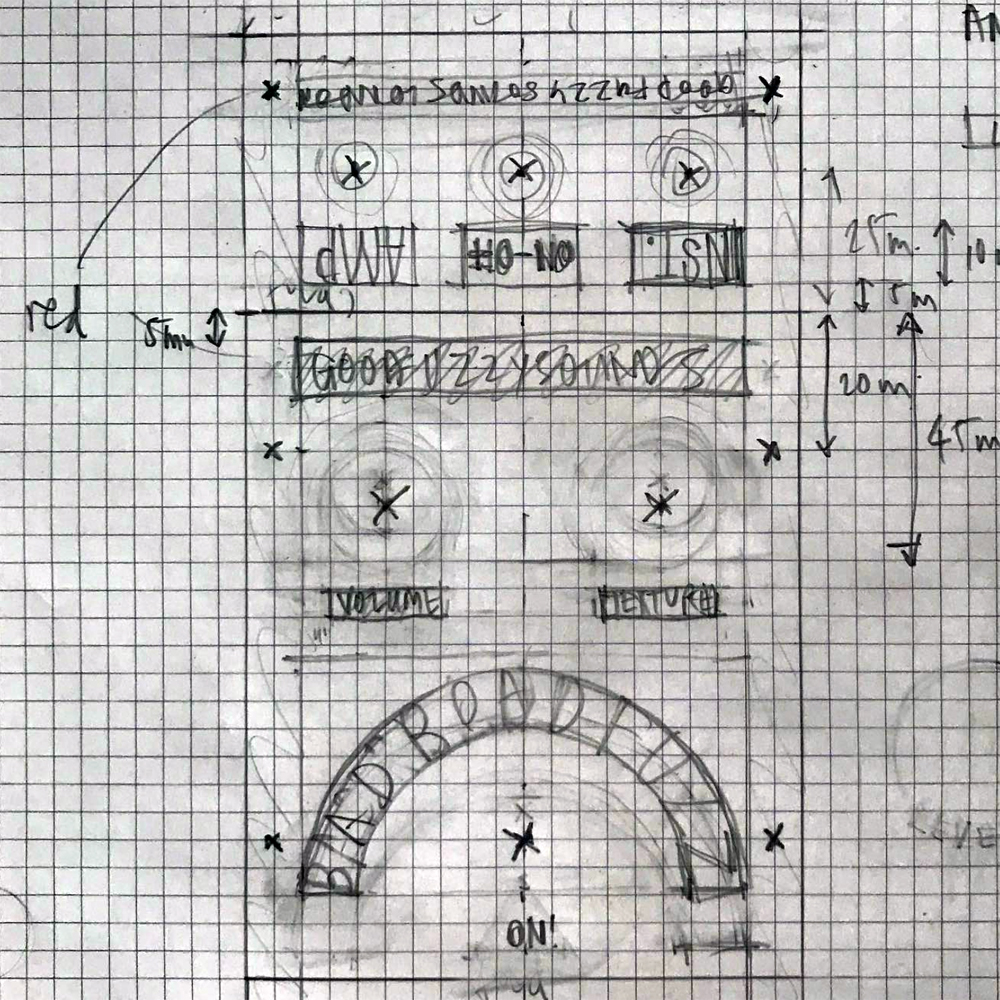How a Good Fuzzy Sounds pedal makes its way from my imagination, to the build and design, finding the right parts, prototyping and eventually becoming available to buy.
Each pedal I make is different, with different enclosures for each circuit. I want my pedals to be distinctive: the hand-made element is important. My favourite film director, Lindsay Anderson, always said: “Perfection is not an aim.”
Workspace
I started making pedals as soon as I got a space to work. My workshop is called the Musical Den and I’m very lucky to have it.
The Den is my autistic sanctuary, where everything I need is within reach, including books and music. I am there as often as possible, playing and listening intently to different guitars and pedals, or making new ones. My autistic hyper-focus means I can work for hours on end, when I have the time. I do lots of drawings and think in depth about design and detail. It’s a pleasure to get into the zone to do this.

Parts
The main building block of Good Fuzzy Sounds is the germanium transistor.
Transistors were developed in the 1950s as alternatives to valves or tubes. The earliest and best fuzzes used germanium transistors even though these were already starting to be replaced by more stable silicon transistors as fuzz was establishing itself.
I go out of my way searching for supplies of obsolete transistors from the 1960s and 1970s because they sound better. They are more difficult to work with, more expensive and sometimes impossible to find, but sound is everything.
Other parts, not so critical to the sound, are also selected with care.

Process
I am always looking for old fuzz circuits, either from rare 1960s pedals or electronics hobby magazines of the period.
They are not complex, but their simplicity means that changing only one or two components has a big impact on the sound.
I will take the original design and make it louder and fuzzier, give it more bass if it’s too shrill or more treble if its muffled, an exaggeration of the best elements of the original circuit.
Circuits are based in the 1960s, but I’m not a purist, and will go where they lead – Good Fuzzy Sounds pedals are as Bad as they can be and only the best circuits make the grade.
Sometimes only the original transistor specified in the schematic will do, but often a range of substitutes work just as well.

Design
In the 1960s each new pedal had its own unique enclosure, and I also spend a lot of time looking for boxes to house my designs so they immediately look different. Everything is important, including the choice of knobs and even washers.
I try to present the circuits using components that match the appearance of 1960s parts where possible, like axial capacitors and carbon composition resistors.
I dislike the look of modern 3PDT footswitches and also try to use switch designs closer to the 1960s designs, just for aesthetic consistency.
The graphics are in simple sans serif fonts, the staples of modernist graphic design and utilitarian industrial design, seen through a punk/DIY lens. This reflects my history, I have been designing zines, posters and flyers since the 1980s. The rawness of this aesthetic goes well with the sound of fuzz. I’m using stamps to apply them at the moment and this adds a human element.
Early on I had the idea of each pedal being named Bad This or Bad That, just as a unifying thread. Bad is good.

Prototypes
Good Fuzzy Sounds makes pedals you and I haven’t heard before. As well as those that are currently in production, I have plans for more designs. The pedals are prototyped to decide what will work.
I started making prototypes in 2020, but they nearly all need changes and most don’t make the grade. I have a big stash of old schematics and ideas going back years, but you can never really tell what they are going to sound like until they are properly soldered up, with the right transistors. When I’ve done that, I play two or three guitars through them, plugged into four different amps. If they sound consistently amazing, I decide they have Good Fuzzy Sounds potential.
If transistors or enclosures are in short supply some pedals will be one-offs or very short runs. One of my first projects was based on a modified tape player pre-amp. It sounded really great but only with the original transistors, which are impossible to find. That one will have to wait until I find those parts. Luckily other circuits are less picky about transistors.

